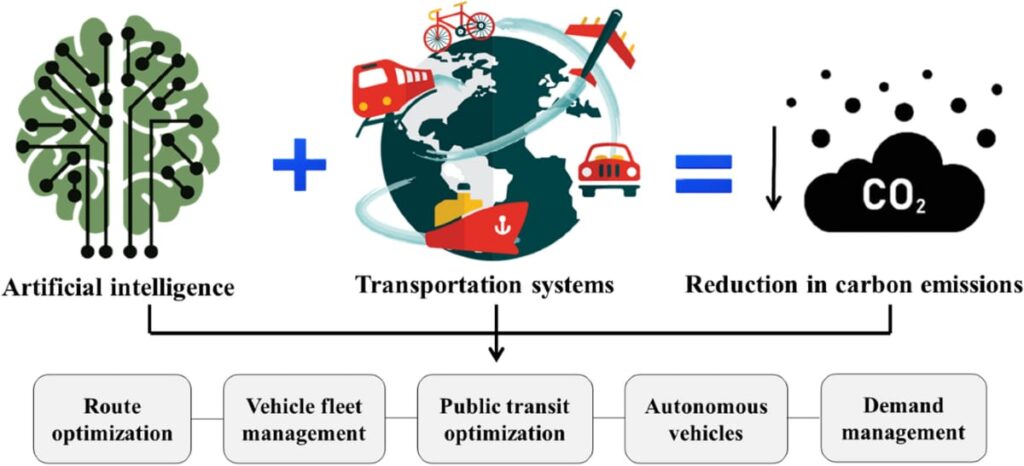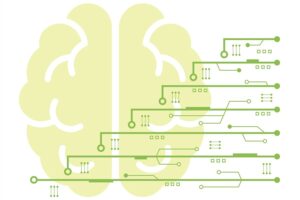Carbon Footprint of Artificial Intelligence?
Our next story is about the carbon footprint of artificial intelligence. AI is transforming the way we live and work, from writing emails to advancing scientific research. But behind the convenience and innovation lies a growing environmental cost. In the next report, we take a closer look at the carbon and water footprint of generative AI, and what our digital future might mean for the planet.

Step aside, cow farts and long-haul flights.
There’s a new eco-villain in town. And it answers to the name of artificial intelligence.
That’s right, your favorite chatty chatbot may be revolutionizing work, creativity, and science, but they’re also racking up a carbon footprint that’s so large, it could wear a size 57 boot. Generative AI is the darling of Silicon Valley, but behind that health-prone tone and dazzling output lies a ravenous energy monster toppling up electricity. Training models of AI don’t just take smarts, but megawatts. In 2021, according to reports, the training of ChatGPT used enough energy to power 120 average U.S. homes for an entire year. And it doesn’t stop there.
Every time we casually ask ChatGPT to summarize an article, generate a form, or a dating app bio, it sucks down about five times more electricity than a simple Google search. So yes, your AI BSS is not just helpful, it’s also thirsty for power.
But wait, it’s not just electricity that this tech giant is guzzling, AI has a water problem too, a big one. Keeping those overheated server stacks cool requires a staggering amount of chilled water.
A large model like GPT-3 can charge nearly 700,000 liters of fresh water. Data centers, the physical homes for all this AI brainpower, are multiplying like rabbits on an energy drink binge. Companies are racing to build more, often powered by not-so-green fossil fuels.
Each data center can house approximately 50,000 power-hungry servers. In 2021 globally, they consumed 460 terawatt-hours of electricity, putting them on par with entire countries like France and Saudi Arabia. By 2026, they are projected to soar to 1,050 terawatt-hours, outranking even Japan. Who knew your email summary came with a carbon footprint of a G7 economy?
And NetStock Hardware, a graphics processing unit, the muscle behind AI’s genius, are guzzlers in their own way. Manufacturing these high-performance chips takes more power than an average CPU, not to mention the dirty business of mining the rare-earth materials needed to build them. In 2023 alone, data centers reportedly received 3.85 million GPUs, up from 2.67 million the year before.

Every time we casually ask ChatGPT to summarize an article, generate a form, or a dating app bio, it sucks down about five times more electricity than a simple Google search. So yes, your AI BSS is not just helpful, it’s also thirsty for power. But wait, it’s not just electricity that this tech giant is guzzling, AI has a water problem too, a big one.
Keeping those overheated server stacks cool requires a staggering amount of chilled water. A large model like GPT-3 can charge nearly 700,000 liters of fresh water. Data centers, the physical homes for all this AI brainpower, are multiplying like rabbits on an energy drink binge. Companies are racing to build more, often powered by not-so-green fossil fuels.
The worst part?
These AI models age faster than avocados. Companies rule out newer, bigger, and more energy-guzzling models every few weeks, making previous ones obsolete. Hence, wasting all that training energy in the process. Yet, here we are, still enchanted by AI’s siren song. With deep interfaces, magical outputs, and zero visible emissions, it’s easy to forget the environmental beast behind the curtain.
So, the next time you’re about to ask your favorite AI to write your email, generate a dinner recipe, or plan your best friend’s birthday, take a pause. Maybe give Mother Earth a break, because while AI may be writing the future, it’s also quietly roasting the planet, one chat at a time.
